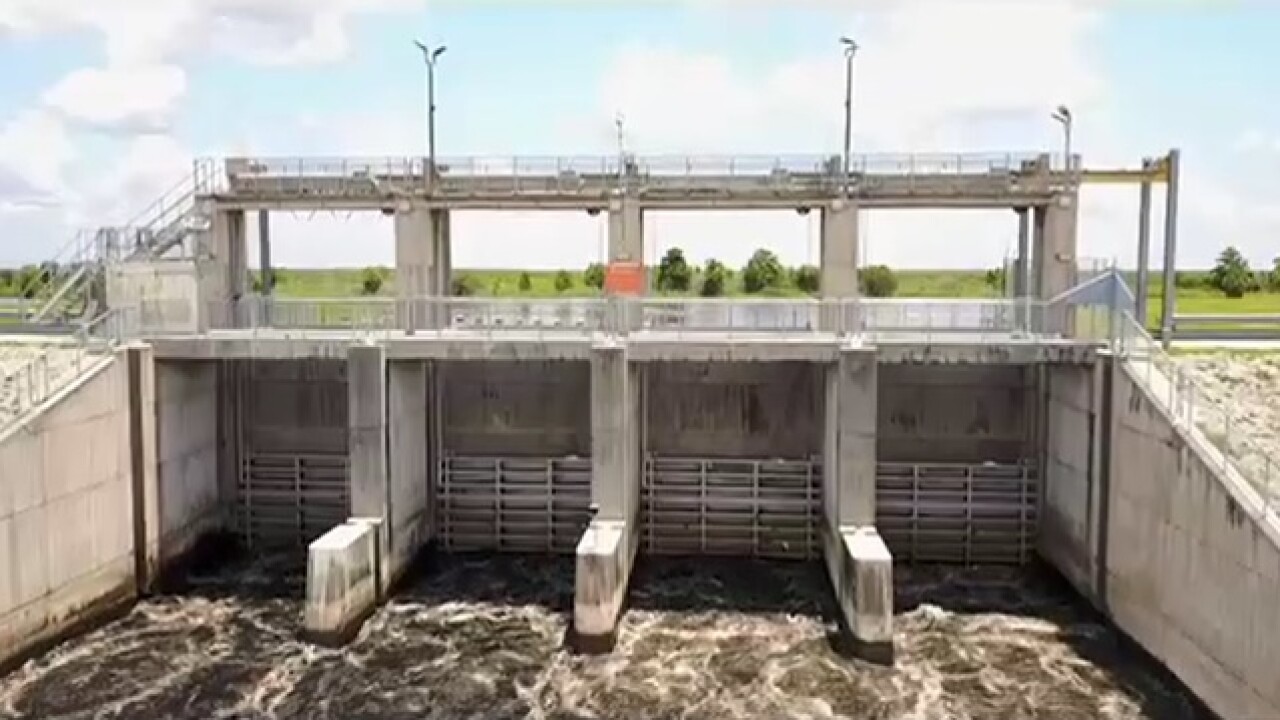JACKSONVILLE, Fla. — The U.S. Army Corps of Engineers (USACE) Jacksonville District will reduce Lake Okeechobee releases to coastal estuaries beginning Saturday in an effort to slow the lake’s recession rate..
Releases to the Caloosahatchee will be reduced to 1,200 cubic feet per second (cfs) as measured at the W.P. Franklin Lock and Dam (S-79) and to 300 cfs as measured at the St. Lucie Lock and Dam (S-80). Rainfall could result in higher releases than the targets due to local basin runoff.
The releases are being continued as part of a planned deviation approved in September 2020 to reduce the risk of lake releases when harmful algal blooms are more likely to be present this summer. The deviation has released about 80,500 acre feet of additional water from the lake since it began in February.
One of the requirements for using the Harmful Algal Bloom deviation is for USACE to maintain a recession rate of no more than 0.5 feet per month to avoid harm to nesting birds. Today, the lake stage is at 14.44 feet. The lake has fallen 0.87 feet in the past 30 days, but is still 2.61 feet higher than it was one year ago and 2.58 feet higher than it was two years ago. These releases will be re-evaluated regularly as conditions in the system change.
“We constantly monitor conditions around Lake Okeechobee, and as evapotranspiration and dry conditions have accelerated the lake recession, we are reducing our releases to protect the nesting birds that have returned to the lake in large numbers for the first time in several years,” said Col. Andrew Kelly, Jacksonville District commander. “The lake is higher than we would like, but we must try to balance the ecology of the lake as well as the northern estuaries as we make efforts to reduce the lake level before the onset of the wet season.”
Recently, water users have taken more water south, and the southern portion of the system has begun to return to more normal levels after a very wet Fall of 2020 limited the flows south earlier this dry season. The Corps continues to provide water to the south for water users and to the Everglades.
Recent satellite images show conditions on Lake Okeechobee remain poor for the development of large, harmful algal blooms. Florida Department of Environmental Protection algae dashboard shows results from samples taken near S-308 that detected a low presence of Microsystis. Warning signs were placed around USACE structures and facilities, the USACE website was updated, and operators continue daily monitoring.
For more information on water level and flows data for Lake Okeechobee, visit the Corps’ water management website at https://www.saj.usace.army.mil/WaterManagement/.



